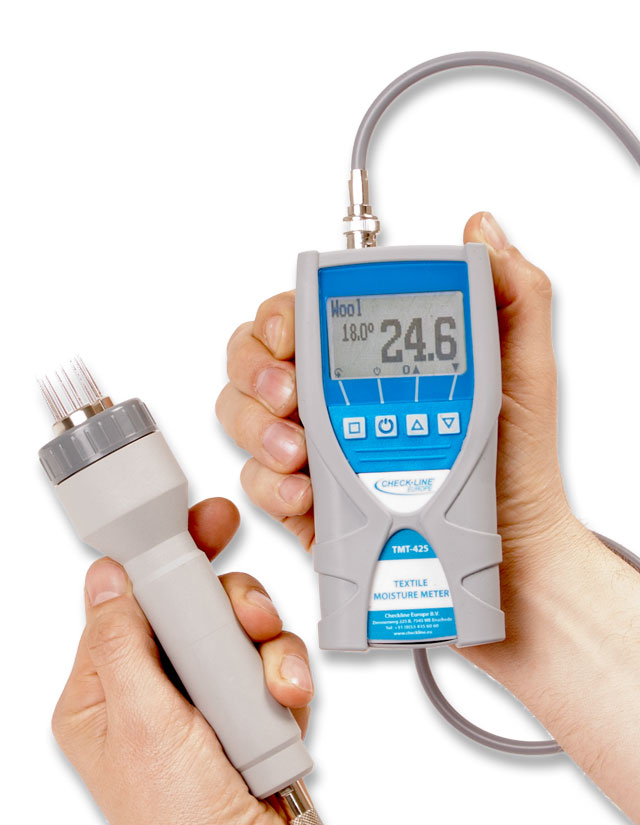The Science Behind Moisture Meters: Just How They Function and Why They're Necessary
The Science Behind Moisture Meters: Just How They Function and Why They're Necessary
Blog Article
Look Into the Globe of Moisture Meters: Whatever You Need to Know
In the world of dampness meters lies a globe of precision and usefulness that typically goes undetected. Comprehending just how moisture meters operate, the various types readily available, and their diverse usages can lose light on their significance in making certain high quality and performance.
How Moisture Meters Work
Moisture meters run by gauging the electrical conductivity or capacitance of products to establish the wetness web content existing. These meters are indispensable devices throughout various markets, consisting of construction, agriculture, and woodworking. By making use of various approaches such as pin-type or pinless innovation, wetness meters supply exact analyses that help professionals make notified decisions.
Pin-type wetness meters work by placing the sharp pins into the material being tested. On the various other hand, pinless dampness meters utilize electromagnetic signals to scan a bigger location without triggering any damage to the product's surface area.
Despite the technique used, moisture meters play an essential function in avoiding issues such as mold and mildew development, architectural damages, or item defects brought on by excess wetness. Recognizing just how these meters work is necessary for making sure the high quality and integrity of products in different applications.
Kinds Of Moisture Meters
Offered the important function wetness meters play in various sectors, it is vital to comprehend the various types available to specialists for accurately analyzing wetness levels - Moisture Meter. There are largely two major kinds of dampness meters: pin-type and pinless dampness meters

On the other hand, pinless dampness meters use electro-magnetic sensor plates to check a larger location of the material without creating any damages. This type appropriates for rapidly scanning huge areas and is generally utilized for floor covering, walls, and ceilings. Pinless meters are practical for taking readings on finished surface areas without leaving any noticeable marks.
Both types of wetness meters have their benefits and are chosen based upon the specific demands of the work at hand. Recognizing the differences between these kinds is vital for specialists to make exact moisture analyses.
Applications Throughout Industries
Building and construction experts depend on wetness meters to analyze the wetness degrees in structure products like concrete, drywall, and wood, which is critical for keeping structural honesty and avoiding concerns like rot or mold. The floor covering industry uses moisture meters to determine the dampness content in subfloors prior to installing different flooring coverings, stopping costly damages due to excess dampness. In the food industry, wetness meters are made use of to keep track of and manage moisture degrees in products i was reading this such as grains, nuts, and dried fruits to preserve quality and quality.
Tips for Utilizing Dampness Meters
Use the wetness meter's calibration settings to guarantee precise readings when determining the wetness content in various materials. Additionally, make sure the meter is established to the proper moisture array for the product you are gauging to obtain the most specific results.
When making use of a pin-type dampness meter, put the pins to the proper deepness advised for the material being checked. This ensures that the moisture readings are extracted from the right depth within the product, offering a more exact depiction of its wetness web content. For pinless moisture meters, bear in mind to maintain appropriate contact with the product's surface area to obtain dependable analyses.
Regularly inspect and change the batteries in your dampness meter to stop incorrect analyses as a result of low power. When not in use to extend its lifespan and preserve its accuracy, Store the meter in a completely dry and risk-free location. By adhering to these suggestions, you can optimize the performance of your wetness meter and obtain exact dampness material dimensions throughout various materials.
Upkeep and Calibration
To guarantee the accuracy of wetness material measurements, routine maintenance and calibration of the dampness meter are crucial action in its appropriate performance. Upkeep involves keeping the moisture meter cost-free and tidy from debris that might affect its readings. It is very important to adhere to the manufacturer's standards for cleansing to avoid damage to the tool. Additionally, regular calibration is necessary to validate the precision of the readings. Calibration changes the moisture meter to make certain that it supplies consistent and reputable results.
Calibration Full Report needs to be done periodically, especially if the dampness meter is used regularly or in critical applications where accurate measurements are called for. By adjusting the dampness and preserving meter frequently, individuals can trust the accuracy of the wetness material measurements gotten.
Final Thought

To conclude, wetness meters play a crucial function in different markets by properly measuring the wetness material of materials. Comprehending how these devices work, the different kinds available, and proper maintenance and calibration are necessary for getting trustworthy outcomes. Whether in manufacturing, building, or farming, using dampness meters read more helps make sure quality assurance and effectiveness in processes.

In conclusion, moisture meters play an essential role in numerous sectors by precisely determining the moisture content of materials.
Report this page